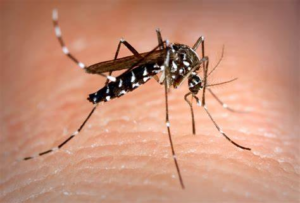Bipolar Disorder Warning Signs: What To Look Out For
3 min read
Overview
A serious mental illness characterized by extreme mood swings. They can include extreme excitement episodes or extreme depressive feelings.
Symptoms
If you’re experiencing new, severe, or persistent symptoms, contact a health care provider.
Symptoms can last over a few weeks, months, or even years. The symptoms vary during the manic and depressive phase. And without any symptoms, in between episodes of mania and depression.
The manic phase is characterized by:
- Extreme happiness, hopefulness, and excitement
- Irritability, anger, fits of rage and hostile behavior

- Restlessness
- Agitation
- Rapid speech
- Poor concentration and judgment
- Increased energy
- Less need for sleep
- Unusually high sex drive
- Setting unrealistic goals
- Paranoia
The depressive phase may include:
- Sadness and crying
- Feelings of hopelessness, worthlessness, and guilt
- Loss of energy
- Loss of interest or pleasure in everyday activities
- Trouble concentrating and making decisions
- Irritability
- Need for more sleep or sleeplessness
- Change in appetite
- Weight loss/gain
- Suicidal thoughts and attempts at suicide
Causes
- The causes of bipolar disorder differ between individuals, and the exact mechanism is not clear.
- Genetics often reported in families of affected individuals
- Brain structure abnormal brain structure and function
- Seasonal depression and certain other mental illness such as anxiety disorder
The risk factors include:
- Family history
- Stress
- Drug or alcohol abuse
Summary
A serious mental illness characterized by extreme mood swings. They can include extreme excitement episodes or extreme depressive feelings.
Causes:
A mental disorder caused by structural and functional changes in the brain or changes in genes. Know More
Symptoms:
Affected individuals experience episodes of depression and episodes of mania. Know More
Diagnosis:
The onset is at adolescence or young adulthood but could also be later in life. The diagnosis takes several factors into account. Know More
©Provided by Focus Medica
Facts
Treatable by a medical professional
Diagnosed by medical professional
Doesn’t require lab test or imaging
Can last several years or be lifelong
Common for ages 18-35
Family history may increase likelihood
Know More
Phases of bipolar disorder:
- Manic: Over excitement and confidence; irritability and impulsive behavior; making reckless decisions. Can also be associated with hallucinations, affecting everyday life.
- Hypomania: Mild symptoms of mania, without hallucinations. Everyday life is not affected.
- Depressive: Feeling lonely, sad and depressed.
Types of bipolar disorder:
- Bipolar I: Patient has at least one manic episode, preceded or followed by hypomanic or major depressive episodes.
- Bipolar II: There are at least one major depressive and hypomanic episodes, without a manic episode.
- Cyclothymic disorder: A patient has several episodes of hypomania and depression in a year.
- Other types: Includes bipolar disorder induced by drugs, alcohol, or other medical conditions.
Symptoms
CHARACTERISTIC
COMMON
Symptoms can last over a few weeks, months, or even years. The symptoms vary during the manic and depressive phase. And without any symptoms, in between episodes of mania and depression.
The manic phase is characterized by:
Extreme happiness, hopefulness, and excitement
Irritability, anger, fits of rage and hostile behavior
Restlessness
Agitation
Rapid speech
Poor concentration and judgment
Increased energy
Less need for sleep
Unusually high sex drive
Setting unrealistic goals
Paranoia
The depressive phase may include:
Sadness and crying
Feelings of hopelessness, worthlessness, and guilt
Loss of energy
Loss of interest or pleasure in everyday activities
Trouble concentrating and making decisions
Irritability
Need for more sleep or sleeplessness
Change in appetite
Weight loss/gain
Suicidal thoughts and attempts at suicide
Causes
COMMON
The causes of bipolar disorder differ between individuals, and the exact mechanism is not clear.
Genetics- often reported in families of affected individuals
Brain structure- abnormal brain structure and function
Seasonal depression and certain other mental illness such as anxiety disorder
The risk factors include:
Family history
Stress
Drug or alcohol abuse
Diagnosis
COMMON
The onset is at adolescence or young adulthood but could also be later in life. The diagnosis takes several factors into account.
Family history to note if any person in the family has been reported with similar conditions.
Psychological questionnaire to assess the symptoms and mental state of the patient.
Mood charting or keeping track of mood changes.
Treatments
Bipolar disorder lasts for a lifetime, with treatments aiming at managing the symptoms by psychotherapy and medication.
Complications
If timely treatment is not provided, bipolar disorder could lead to:
- Damaged and strained relationships, in and outside the home
- Poor performance at school or work
- Alcohol and drug abuse
- Financial difficulties
- Suicidal thoughts and attempts

Source: Bipolar Disorder Warning Signs: What To Look Out For (msn.com)


